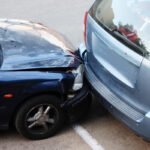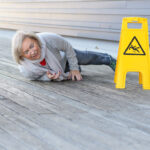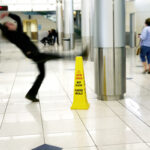Recent Blog Posts

Summary Judgment Granted in Favor of Cut-Off Driver
New York personal injury attorney Leandros A. Vrionedes talks about plaintiff summary judgment motions for liability in car accident lawsuits.

False Imprisonment and Malicious Prosecution Claims against NYPD, City, and Officers Moves Forward
New York civil rights & prosecutorial misconduct attorney Leandros A. Vrionedes on false imprisonment & malicious prosecution lawsuit filed against NYC & NYPD.

Trip-and-Fall Claim Devolves into Fight over Destroyed Evidence
New York personal injury attorney Leandros A. Vrionedes reports on elevator trip & fall where defendant faces negative inference for spoliation of evidence.

Plaintiff Obtains Summary Judgment on Issue of Defendant Liability
New York personal injury attorney Leandros A. Vrionedes reports on case where plaintiff won summary judgment on liability issue in car accident.

Conflicting Medical Evidence Prevents Early Dismissal of Plaintiff’s Claims
New York personal injury attorney Leandros A. Vrionedes reports on Hazel v. Colon motion to dismiss car accident based on 90/180 day serious injury rule.

Employer Responsibility in Car Accident Caused by Employee
New York personal injury attorney Leandros A. Vrionedes on case holding employer could be liable for employee’s “after hours” car accident.

Stroke Victim with Permanent Visual and Cognitive Damage Permitted to Move Forward with Medical Malpractice Suit
New York personal injury attorney Leandros A. Vrionedes reports on appeals court allowing stroke victim’s medical malpractice against hospital to continue.

Another Hoverboard Causes a Fire in New York, Despite Ban
Hoverboards remain illegal to ride on New York City streets, but not illegal to own, and the dangerous devices are being blamed for multiple recent fires in the New York area. Most recently, a fire broke out in a Staten Island home when a charging hoverboard burst into flame. This is the third residential… Read More »

Doctor Found to Have Duty to Warn Patient of Effects of Prescribed Medication
A decision from the New York Court of Appeals concluded that a doctor has a duty to notify a patient that the prescribed medication can jeopardize that patient’s ability to drive safely, making the doctor liable if a patient without that notice injures someone else while driving. In the case of Davis v. South… Read More »

Court Permits Claim for Slip and Fall on Wet Subway Platform to Move Forward
During the winter, those of us living in snowy climates can expect there to be melted snow and ice tracked into slippery lobbies and doorways. However, once inside a building or train station, we aren’t always prepared to find puddles of standing water on slippery concrete floors, and can pay the price of an… Read More »


